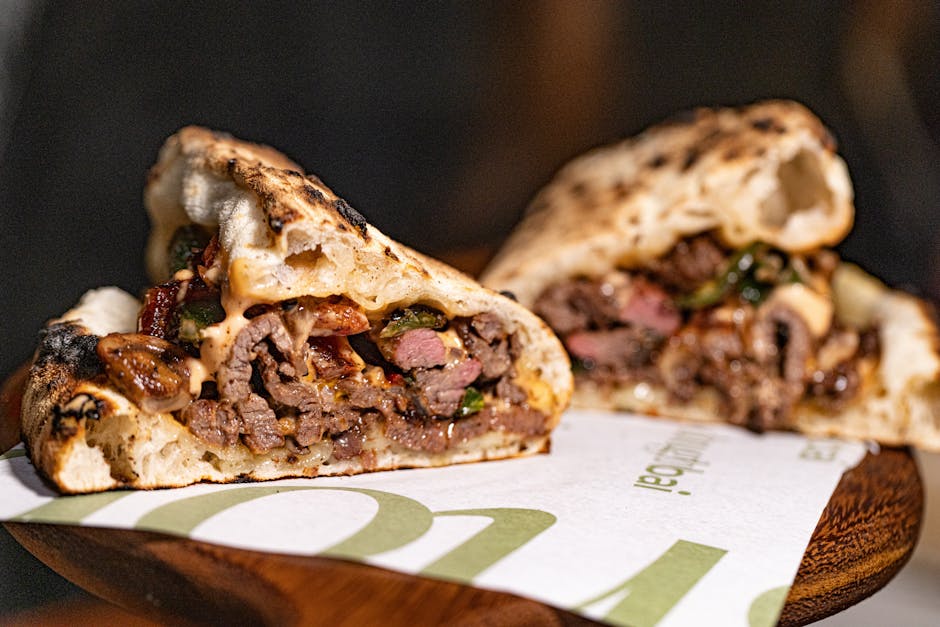Introduction
Craving a classic Philly Cheesesteak but short on time? This iconic sandwich is surprisingly easy to make at home, even on a busy weeknight. The key to a truly authentic and delicious Philly Cheesesteak lies in choosing the right meat. This article will guide you through the best meat options, ensuring your homemade version rivals the best cheesesteaks Philadelphia has to offer.
The Best Meat Choices for Your Philly Cheesesteak
Ribeye: The Gold Standard
Ribeye is widely considered the ideal cut for a Philly Cheesesteak. Its rich marbling delivers exceptional flavor and tenderness. The fat renders beautifully during cooking, creating a juicy and flavorful steak.
- Pros: Unmatched flavor, tender texture, readily available.
- Cons: Can be more expensive than other cuts.
- Preparation: Thinly slice against the grain for optimal tenderness.
Top Round: A Budget-Friendly Alternative
Top round is a leaner and more affordable option. While it lacks some of the richness of ribeye, it can still produce a delicious cheesesteak with proper preparation.
- Pros: Budget-friendly, readily available, leaner option.
- Cons: Can be tougher than ribeye if not sliced and cooked properly.
- Preparation: Partially freeze the meat for about 30 minutes before slicing thinly against the grain. This makes it easier to get those thin, even slices. Consider marinating for added flavor and tenderness.
Sirloin: A Good Middle Ground
Sirloin offers a balance between flavor and cost. It’s leaner than ribeye but more flavorful than top round. This makes it a versatile and reliable choice for a quick and satisfying cheesesteak.
- Pros: Good flavor, relatively affordable, widely available.
- Cons: Can be slightly tougher than ribeye if overcooked.
- Preparation: Slice thinly against the grain. Avoid overcooking to maintain tenderness.
Flank Steak: A Flavorful Choice
While not as traditional, flank steak can be a delicious and flavorful option for a Philly Cheesesteak, especially if you enjoy a more robust, beefy taste. It’s important to slice it thinly and against the grain.
- Pros: Rich flavor, relatively affordable.
- Cons: Can be tough if not sliced and cooked properly. Requires careful preparation.
- Preparation: Marinating is highly recommended to tenderize the meat. Slice very thinly against the grain after cooking.
Tips for Slicing the Meat
Regardless of which cut you choose, proper slicing is crucial for a great Philly Cheesesteak. Here’s how to do it right:
- Partially Freeze: Place the meat in the freezer for about 30-45 minutes before slicing. This firms up the meat and makes it easier to slice thinly.
- Sharp Knife: Use a sharp knife to ensure clean, even slices. A dull knife will tear the meat and make it difficult to slice thinly.
- Slice Against the Grain: Identify the direction of the muscle fibers (the “grain”) and slice perpendicular to them. This shortens the fibers, making the meat more tender.
- Thin Slices: Aim for slices that are about 1/8 inch thick.
Beyond the Meat: Building the Perfect Cheesesteak
Choosing the right meat is just the first step. Here are some quick tips for creating the best easy weeknight Philly Cheesesteak:
- Bread: Amoroso rolls are the traditional choice, but any sturdy hoagie roll will work.
- Cheese: Provolone, American, or Cheese Whiz are the classic options.
- Onions: Thinly sliced onions are a must. Caramelizing them adds sweetness and depth of flavor.
- Peppers: Bell peppers (green or red) are a common addition.
- Cooking: Use a hot griddle or large skillet to cook the meat and onions quickly.
Conclusion
Choosing the best meat for your Philly Cheesesteak is essential for creating an authentic and delicious sandwich. While ribeye reigns supreme for its flavor and tenderness, budget-friendly options like top round and sirloin can also deliver excellent results with proper preparation. Remember to slice the meat thinly against the grain, and don’t forget the essential toppings! With a little planning and the right ingredients, you can enjoy a mouthwatering Philly Cheesesteak any night of the week.
